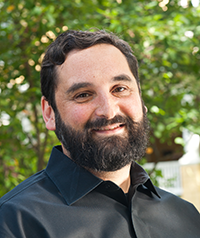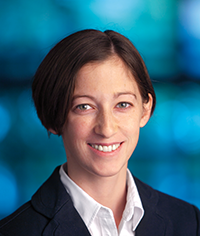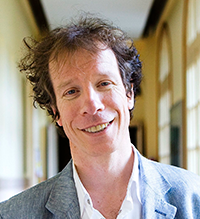
Before founding Gamalon Machine Intelligence, Ben Vigoda was technical co-founder and CEO of Lyric Semiconductor, a startup that created the first integrated circuits and processor architectures for statistical machine learning and signal processing. The company was named one of the 50 Most Innovative Companies by Technology Review and was featured in the Wall Street Journal, New York Times, EE Times, Scientific American, Wired, and other media. Lyric was successfully acquired by Analog Devices, and Lyric's products and technology are being deployed in leading smart phones and consumer electronics, medical devices, wireless base stations, and automobiles.
Ben completed his PhD at MIT developing circuits for implementing machine learning algorithms natively in hardware. He has won entrepreneurship competitions at MIT and Harvard, fellowships from Intel and the Kavli Foundation/National Academy of Sciences, and has held research appointments at MIT, HP, Mitsubishi, and the Santa Fe Institute. He has authored over 120 patents and academic publications. He currently serves on the DARPA Information Science and Technology (ISAT) steering committee.
Ben also co-founded Design That Matters, a not-for-profit that for the past decade has helped solve engineering and design problems in under-served communities and has saved thousands of infant lives by developing low-cost, easy-to-use medical technology such as infant incubators, UV therapy, pulse oximeters, and IV drip systems that have been fielded in 20 countries.

The human brain is a complex organ characterized by heterogeneous patterns of interconnections. New non-invasive imaging techniques now allow for these patterns to be carefully and comprehensively mapped in individual humans, paving the way for a better understanding of how wiring supports our thought processes. While a large body of work now focuses on descriptive statistics to characterize these wiring patterns, a critical open question lies in how the organization of these networks constrains the potential repertoire of brain dynamics. In this talk, I will describe an approach for understanding how perturbations to brain dynamics propagate through complex writing patterns, driving the brain into new states of activity. Drawing on a range of disciplinary tools – from graph theory and graph signal processing to network control theory and optimization – I will identify control points in brain networks, characterize trajectories of brain activity states following perturbation to those points, and propose a mechanism for how network control evolves in our brains as we grow from children into adults. Finally, I will describe how these computational tools and approaches can be used to better understand how the brain controls its own dynamics (and we in turn control our own behavior), but also how we can inform stimulation devices to control abnormal brain dynamics, for example in patients with severe epilepsy.
Danielle S. Bassett is an Associate Professor in the Department of Bioengineering at the University of Pennsylvania. She is most well-known for her work blending neural and systems engineering to identify fundamental mechanisms of cognition and disease in human brain networks. She received a B.S. in physics from the Pennsylvania State University and a Ph.D. in physics from the University of Cambridge, UK. Following a postdoctoral position at UC Santa Barbara, she was a Junior Research Fellow at the Sage Center for the Study of the Mind. In 2012, she was named American Psychological Association's `Rising Star' and given an Alumni Achievement Award from the Schreyer Honors College at Pennsylvania State University for extraordinary achievement under the age of 35. In 2014, she was named an Alfred P Sloan Research Fellow and received the MacArthur Fellow Genius Grant. In 2015, she received the IEEE EMBS Early Academic Achievement Award, and was named an ONR Young Investigator. In 2016, she received an NSF CAREER award and was named one of Popular Science’s Brilliant 10. She is the founding director of the Penn Network Visualization Program, a combined undergraduate art internship and K-12 outreach program bridging network science and the visual arts. Her work has been supported by the National Science Foundation, the National Institutes of Health, the Army Research Office, the Army Research Laboratory, the Alfred P Sloan Foundation, the John D and Catherine T MacArthur Foundation, and the Office of Naval Research. She lives with her husband and two sons in Wallingford, Pennsylvania.

Deep convolutional networks have obtained spectacular results for image understanding, audio and medical signal analysis, natural languages... We review their architecture, and analyze their mathematical properties, with many open questions. These architectures seem to linearize important non-linear transformations, while reducing dimensionality with appropriate invariants. They are computed with non-linear contractions, and multiscale linear operators, where wavelets play an important role. Applications are shown for image and audio classification as well as regressions of quantum molecular energies.
Stéphane Mallat received the Ph.D. from the University of Pennsylvania, in 1988. He was then Professor at the Courant Institute of Mathematical Sciences, until 1994. In 1995, he became Professor in Applied Mathematics at Ecole Polytechnique, Paris and Department Chair in 2001. From 2001 to 2007 he was co-founder and CEO of a semiconductor start-up company. In 2012 he joined the Computer Science Department of Ecole Normale Supérieure, in Paris.
Stéphane Mallat’s research interests include learning, signal processing, and harmonic analysis. He is a member of the French Academy of sciences, an IEEE Fellow and an EUSIPCO Fellow. In 1997, he received the Outstanding Achievement Award from the SPIE Society and was a plenary lecturer at the International Congress of Mathematicians in 1998. He also received the 2004 European IST Grand prize, the 2004 INIST-CNRS prize for most cited French researcher in engineering and computer science, the 2007 EADS grand prize of the French Academy of Sciences, the 2013 Innovation medal of the CNRS, and the 2015 IEEE Signal Processing best sustaining paper award.


